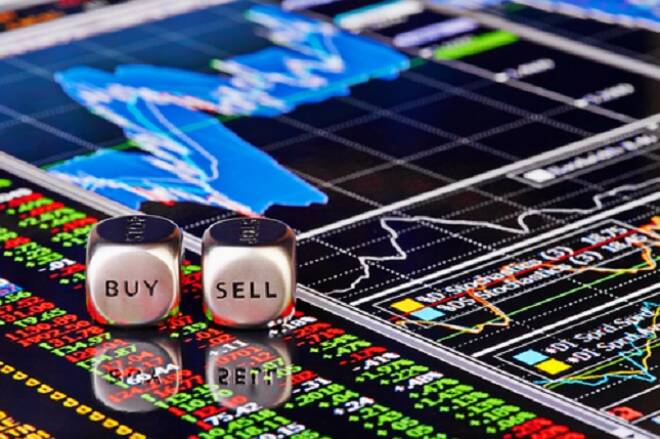Advertisement
Advertisement
Asia-Pacific Shares Mixed; Hong Kong’s Hang Seng Index Plunges More Than 1.50 Percent
By:
With most major indexes in Asia and the U.S., for that matter, trading marginally up or down, the steep drop in Hong Kong’s Hang Seng Index stands out. For stock traders, Hong Kong’s continuing attractiveness as a base for international business is increasingly being questioned.
The major Asia Pacific stock indexes are trading mixed early Wednesday, reflecting the bearish reversal on Wall Street in the overnight session that brought an end to Dow Jones Industrial Average’s six-day and the S&P 500 and NASDAQ Composite five-day winning streaks. There were no major events on Tuesday or early Wednesday, which suggests investors may just be taking profits after a solid one-week run.
At 03:42 GMT, Japan’s Nikkei 225 Index is trading 21223.36, up 19.08 or +0.09%. Hong Kong’s Hang Seng Index is at 27372.17, down 417.17 or -1.50% and South Korea’s KOSPI Index is trading 2107.07, down 4.74 or -0.22%.
Australia’s S&P/ASX 200 is trading 6556.40, up 10.10 or +0.15% and China’s Shanghai Index is at 2909.07, down 16.65 or -0.57%.
Protests in Hong Kong Continue
With most major indexes in Asia and the U.S., for that matter, trading marginally up or down, the steep drop in Hong Kong’s Hang Seng Index stands out.
According to CNBC, tensions in Hong Kong remain high on Wednesday with large crowds of protesters continuing to take aim at stopping a government plan to allow extraditions to mainland China. The heart of the issue, demonstrators say, is the city’s ceding its autonomy to Beijing.
For stock traders, Hong Kong’s continuing attractiveness as a base for international business is increasingly being questioned. The proposed ordinance change could compromise Hong Kong’s rule of law, which foreign business groups and governments, including the United States, say could make the country’s global financial center a less attractive place to do business.
“We are also concerned that the amendments could damage Hong Kong’s business environment and subject our citizens residing in or visiting Hong Kong to China’s capricious judicial system,” U.S. State Department spokeswoman Morgan Ortagus said at a briefing Monday.
Chinese Inflation Rises
Official Chinese inflation data showed the producer price index in the country rising 0.6% year-on-year in May, meeting expectations of analysts in a Reuters poll. The consumer price index also rose 2.7% year-on-year in the same period, its fastest pace since February 2018 and in line with analyst expectations.
U.S. Producer Prices Solid
The Labor Department reported on Tuesday that U.S. producer prices increased solidly for a second straight month in May, boosted by a surge in the cost of hotel accommodation and gains in a range of other services, pointing to a steady pickup in underlying inflation pressures.
Producer prices excluding food, energy and trade services rose 0.4% last month, matching April’s gain, the government said. The so-called core PPI increased 2.3% in the 12 months through May after rising 2.2% in April.
Weaker energy and food prices, however, partially offset the increase in services last month. That led the producer price index for final demand to edge up 0.1% in May after gaining 0.2% in April. In the 12 months through May, the PPI climbed 1.8%, slowing from April’s 2.2% advance. Economists were looking for the PPI to come in at 0.1% in May and rise 2.0% on a year-on-year basis.
The report likely supports the Fed’s view that the recent weak inflation readings are probably transitory. This likely means central bank policymakers won’t cut rates at next week’s two-day monetary policy meeting.
About the Author
James Hyerczykauthor
James Hyerczyk is a U.S. based seasoned technical analyst and educator with over 40 years of experience in market analysis and trading, specializing in chart patterns and price movement. He is the author of two books on technical analysis and has a background in both futures and stock markets.
Advertisement
